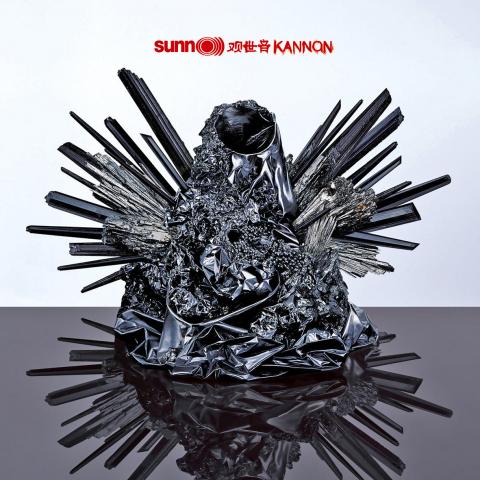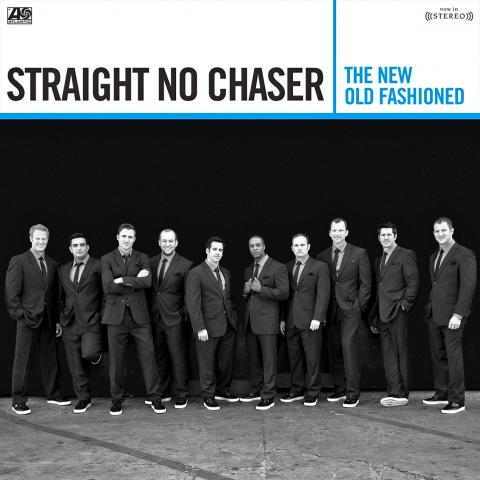Kannon , Sunn O))), Southern Lord
The band Sunn O))) creates theater of and about sound. Its performances involve the expert handling of sustained low frequencies. These are made primarily by Greg Anderson and Stephen O’Malley, with electric guitars and amplifiers, through drumless processionals of notes and chords in an improvised crawl.
During a public interview in New York with Red Bull Music Academy two years ago, O’Malley was asked to confirm something he’d said earlier: that the amplifiers are really the star of his band’s live show. His eyes went big, and he nodded enthusiastically; then he took the idea one step further toward acoustic science. “The output transformers of the amps,” he offered. “And the preamp tubes.”

Its concerts are spectacles anyway. They include the singer Attila Csihar’s slow physical gestures and baleful growls, near-total darkness, hooded robes as stage costumes, and a Great Wall of amplifiers. But they come down to the notion of sound as an almost physical presence, acting upon people in a room and the dimensions of the room itself.
Anderson and O’Malley use the same voluminous amplifier setup in small studios as they do in clubs and theaters, and have figured out ways — with the help of the engineer and producer Randall Dunn — to record it with depth and clarity. Still, it’s a different experience on the record, without the black-magic vibe of the shows.
In its last studio album, Monoliths and Dimensions, from 2009, Sunn O))) used a choir and arrangements for brass and strings; those extra elements created space and new textures in the music. But they were also fancy dressing for the preamp tubes.

Since then, the band has seemed surer of itself, asking us to take it more at face value. It has released recordings of rehearsals and performances on its official Bandcamp site; this year it uploaded to a second Bandcamp page dozens of live recordings made by fans. And it has just released Kannon, a three-track album that gets close to the band’s standard live set.
Kannon is surprising in two ways. One is its brevity: just over half an hour. The other is its austerity, even for a fairly austere band. This music demands a lot. It’s hard to love, and hard to share.
Kannon 1, the longest track, with an ascending and descending guitar pattern and Csihar’s voice making deep glottal clicks like a stick run along an iron fence, is gorgeous, sensuous and layered: Its sense of audio space is enormous.

But Kannon 2 and Kannon 3 are for the most committed, those who have gone deep into the secondary Bandcamp page.
The first leans too heavily on a simple idea, repeating a bare melodic line under Csihar’s gray chanting; the second begins promisingly, with tremolo feedback leading into multitracked sighing vocals but becomes what sounds like another rehearsal tape: original in sound, as always, but thin on material. I wouldn’t mind seeing it live at all.
— Ben Ratliff, NY Times News Service
Pentatonix, Pentatonix, RCA
The New Old Fashioned, Straight No Chaser, Atlantic
These are strange days for a cappella. As a format, it has never been mightier, the byproduct of a culture that brought us two smash Pitch Perfect movies, with a third on the way. Last week Pentatonix, which won the third season of The Sing-Off — the prime time NBC show, another piece of the puzzle — became the first a cappella group ever to reach No. 1 on the Billboard album chart.
The instant success of Pentatonix, an album mostly of original songs, can be chalked up partly to a ruthlessly savvy social-media campaign: In recent weeks, Pentatonix released covers of two song-of-summer contenders, Jack U and Justin Bieber’s Where Are U Now and Omi’s Cheerleader. The group’s YouTube channel has 9.2 million subscribers, and those tracks (and their videos) were content designed to blow up online.
Those sleek pop covers appear on deluxe versions of the album, and in some ways set the parameters. By outward appearances, Pentatonix is a coed assortment of five cheery humans, but their arrangements and production yield an unnervingly airless experience; they often sound as if they were straining to pass the Turing test. Maybe this is what happens when you’re bent on cracking the code of Auto-Tuned contemporary pop. Or maybe they really are replicants.
Consider the indistinct plasticity of Scott Hoying’s voice on Ref, a poor emulation of first-wave Justin Timberlake, or Take Me Home, which suggests an ersatz One Direction. Consider the synth-vocal bell chimes that open Rose Gold, a song as grandiose as its title. Consider that a guest turn by Jason Derulo, on the early-1990s Shai hit If I Ever Fall in Love, stands out for its warmth and emotional expression.
What’s a shame is that Pentatonix has real assets: a silky blend, a firm grasp of dynamics, a first-rate bass in Avi Kaplan. But Pentatonix, created with producer and vocal arranger Ben Bram, closes the vent on the main point of a cappella, which is the sound of voices resonating in physical space.
That point hasn’t been lost on Straight No Chaser, a more seasoned and traditional exponent of the form. The New Old Fashioned, the group’s pointedly titled fifth album, adheres to a playbook and a value system in line with the collegiate circuit from which it first emerged. The humor is earnest and geeky — never more than on Movie Medley, or a parody of Meghan Trainor’s All About That Bass retooled for vocal nerds — as is the overall choice of covers.
So while the group manages a timely nod to Can’t Feel My Face, by the Weeknd, and a version of Take Me to Church, by Hozier, the performances rarely transcend milquetoast proficiency. And the segues, like one from Willie Nelson’s On the Road Again to Zac Brown’s I Play the Road, feel starchy and forced.
But even when Straight No Chaser is demonstrating middle-of-the-road taste, as on its version of Charlie Puth’s Marvin Gaye, the group sounds vibrantly warmblooded. Which is an odd threshold for judgment, but that’s where things now stand.
— Nate Chinen, NY Times News Service

President William Lai (賴清德) yesterday delivered an address marking the first anniversary of his presidency. In the speech, Lai affirmed Taiwan’s global role in technology, trade and security. He announced economic and national security initiatives, and emphasized democratic values and cross-party cooperation. The following is the full text of his speech: Yesterday, outside of Beida Elementary School in New Taipei City’s Sanxia District (三峽), there was a major traffic accident that, sadly, claimed several lives and resulted in multiple injuries. The Executive Yuan immediately formed a task force, and last night I personally visited the victims in hospital. Central government agencies and the

Australia’s ABC last week published a piece on the recall campaign. The article emphasized the divisions in Taiwanese society and blamed the recall for worsening them. It quotes a supporter of the Taiwan People’s Party (TPP) as saying “I’m 43 years old, born and raised here, and I’ve never seen the country this divided in my entire life.” Apparently, as an adult, she slept through the post-election violence in 2000 and 2004 by the Chinese Nationalist Party (KMT), the veiled coup threats by the military when Chen Shui-bian (陳水扁) became president, the 2006 Red Shirt protests against him ginned up by

As with most of northern Thailand’s Chinese Nationalist Party (KMT) settlements, the village of Arunothai was only given a Thai name once the Thai government began in the 1970s to assert control over the border region and initiate a decades-long process of political integration. The village’s original name, bestowed by its Yunnanese founders when they first settled the valley in the late 1960s, was a Chinese name, Dagudi (大谷地), which literally translates as “a place for threshing rice.” At that time, these village founders did not know how permanent their settlement would be. Most of Arunothai’s first generation were soldiers

Among Thailand’s Chinese Nationalist Party (KMT) villages, a certain rivalry exists between Arunothai, the largest of these villages, and Mae Salong, which is currently the most prosperous. Historically, the rivalry stems from a split in KMT military factions in the early 1960s, which divided command and opium territories after Chiang Kai-shek (蔣介石) cut off open support in 1961 due to international pressure (see part two, “The KMT opium lords of the Golden Triangle,” on May 20). But today this rivalry manifests as a different kind of split, with Arunothai leading a pro-China faction and Mae Salong staunchly aligned to Taiwan.